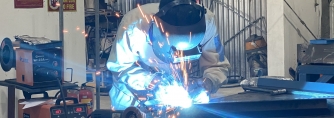
External Threads vs. Internal Threads: Choosing the Right Thread Type for Your Application
Threaded connections are vital in various industries, ensuring the secure assembly and disassembly of components. Understanding the distinction between external threads and internal threads is crucial for selecting the appropriate thread type for your specific application.
In this comprehensive guide, we will explore the characteristics, applications, and considerations associated with external and internal threads. By the end, you will have a clear understanding of their differences and be able to make informed decisions when it comes to choosing the right thread type.
1. External Threads
External threads, also known as male threads, are commonly found on screws, bolts, and other male fasteners. They are designed to fit into corresponding internal threads, creating a secure connection. Here are the key aspects of external threads to consider:
Characteristics
External threads consist of ridges known as crests, which spiral around the outside surface of the fastener. These crests are separated by valleys called roots. The thread pitch determines the distance between adjacent crests.
Applications
External threads are widely used in applications where the male fastener needs to be inserted into a female component. They are utilized for fastening components together, securing objects, or creating removable connections. Examples include screws in woodworking, bolts in structural applications, and studs in engine assemblies.
Considerations
When working with external threads, it is crucial to ensure that the thread pitch matches the internal threads of the mating component. Additionally, factors such as thread engagement length, thread strength, and material compatibility should be considered to ensure a reliable and durable connection.
2. Internal Threads
Internal threads, also referred to as female threads, are commonly found in nuts, tapped holes, and other female fasteners. They are designed to receive and engage with external threads. Let's explore the key aspects of internal threads:
Characteristics
Internal threads consist of helical grooves on the inside surface of the fastener, matching the shape and pitch of the external threads. The engagement of the external and internal threads creates a tight and secure connection.
Applications
Internal threads are widely used in applications where nuts or threaded holes are employed to secure components. They provide a means to fasten objects together, adjust tension, or create removable connections. Internal threads find applications in manufacturing, automotive, construction, and electronics industries, among others.
Considerations
When selecting the appropriate internal thread, factors such as thread pitch, thread depth, material compatibility, and strength requirements of the connection should be considered. Proper engagement between the internal and external threads is crucial for ensuring a secure and reliable joint.
External Threads vs. Internal Threads
|
Aspect |
External Threads |
Internal Threads |
|
Definition |
Threads on male fasteners |
Threads on female fasteners |
|
Characteristics |
Ridges (crests) spiral around exterior surface |
Helical grooves on interior surface |
|
Function |
Inserts into corresponding internal threads |
Receives and engages with external threads |
|
Applications |
Fastening components, securing objects |
Nuts, threaded holes, securing components |
|
Thread Engagement |
Inserts into internal threads of mating component |
Receives external threads of mating component |
|
Considerations |
Thread pitch, engagement length, strength, material compatibility |
Thread pitch, depth, material compatibility, strength requirements |
|
Advantages |
Easy insertion and removal, suitable for removable connections |
Secure and fixed connection, provides tightening capability |
|
Examples |
Screws, bolts, studs |
Nuts, tapped holes |
|
Compatibility |
Must match internal threads of mating component |
Must match external threads of mating component |
|
Connection Type |
Removable |
Removable or fixed |
3. Choosing the Right Thread Type
When deciding between external and internal threads for your application, several factors should be taken into account.
Functional Requirements
Evaluate the specific needs of your project. Do you require a removable connection or a permanent joint? Are you aiming for adjustable tension or a fixed position? Understanding the functional requirements will help determine whether external or internal threads are more suitable.
Material Compatibility
Consider the materials of the components being connected. Different materials have varying thread strength, wear resistance, and compatibility. Ensure that the selected thread type and material combination can withstand the intended load and environmental conditions.
Assembly and Disassembly
If frequent assembly and disassembly are anticipated, external threads might be more convenient. They allow for easy insertion and removal of the male fastener. On the other hand, internal threads offer a secure and fixed connection, making them suitable for applications that require stability.
Compatibility with Existing Components
If you are working with existing components or assemblies, compatibility with the existing thread types is essential. Ensure that the external and internal threads of the components are compatible in terms of thread pitch, diameter, and thread form.
External threads and internal threads are critical for threaded connections, providing secure and reliable joints in various applications. By understanding their characteristics, applications, and considerations, you can choose the right thread type for your specific needs. Whether you opt for external threads or internal threads, a well-matched thread system will contribute to the overall strength and functionality of your project, ensuring efficient assembly and disassembly, secure connections, and optimal performance.
- Smart Vietnam: Site Box – Tough, Secure, and Built for the Jobsite
- Smart Vietnam: First Aid Cabinet – Tough, Reliable, and Ready When You Need It
- Smart Vietnam: Gun Safe – Your Ultimate Firearm Protection Solution
- Smart Vietnam: Truck Cap – Your Ultimate Ute Upgrade
- Smart Vietnam: PickupPack – The Mobile Storage Master
- Smart Vietnam: Aluminum Truck Racks – The Reliable Workhorse
- Smart Vietnam: Heavy-Duty Ute Tipper – Work Smarter, Not Harder
- Smart Vietnam: Motorcycle Loader – For Safe, Easy Transport
- Smart Vietnam: One Tonne Tilt Tray Ute – Simplify Your Heavy Lifting



















_cr_334x118.png)


















-min_cr_334x118.jpg)


















